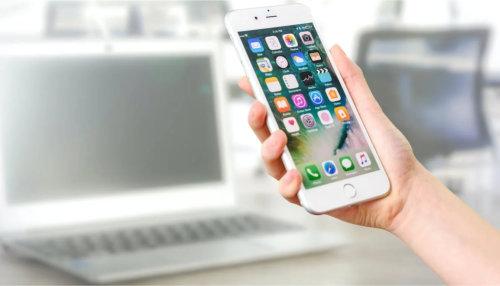Cell phones have become an indispensable part of our daily lives, acting as powerful tools for communication, productivity, and entertainment. With a plethora of
apps and features available at our fingertips, it is easy for the typical phone screen to become cluttered and disorganized.
Taking the time to organize your smartphone screen is not just about aesthetics; it can significantly enhance your productivity, reduce stress, and optimize your overall
smartphone experience.
1. Get Rid of What You're Not Using. First and foremost, begin by identifying and uninstalling apps you no longer use. This declutters your screen and frees up storage space.
By the way, the average person uses 9 mobile apps per day and 30 per month. If the average smartphone user has 80 apps on their phone, this means that more than 62% of those apps aren't being used.
Bottom line, there are likely a few (or a lot) that you can uninstall...or at least move off of your home screen.
2. Prioritize Frequently Used Apps:
Place the most frequently used apps on the home screen...the first screen you see. This way, you can access them with a single tap.
Keep only your most frequently used apps on your home screen, like Calendar, Weather, Messages, Facebook, Camera, Life360, and maybe a productivity app. Move the rest
to subsequent pages.
3. Arrange Apps by Categories: Categorize your apps based on their function, such as productivity, social media, entertainment, or health. Create folders for each category to group related apps together, making them easier to find.
Personally, I like to keep a few select apps on their own, meaning not tucked in a digital folder...but ONLY those apps that I use every single day.
The others are all in categorized phone folders. For example, I have a phone folder called, 'Restaurants.'
All of my favorite restaurant apps are in that folder, rather
than scattered all over my phone screens.
I also have a phone folder called travel where my airline, hotel, and car rental apps live.
4. Utilize Widgets Wisely: Widgets can be useful for accessing information quickly. An example of a phone widget is a weather widget that displays the current weather conditions and forecast on your phone's home screen without needing to open a weather app. I have one of these and it's useful.
HOWEVER, too many widgets can lead to clutter. Select only essential widgets that provide information that's relevant to you...and remove the rest.
5. Keep Your Wallpaper Basic: Choose a basic and clutter-free wallpaper (the background that your phone apps are displayed on) that complements your phone's layout. A plain blue background, for example, is perfect for clearly seeing what you have, reducing visual distractions. When you use a very busy background, it's much more challenging to quickly see the app you need at-a-glance.
6. Perform Regular Maintenance: Periodically review your phone screen organization (once a month or more) and make necessary adjustments, deleting apps you no longer use. As you download new apps or your needs change, ensure your screen remains
organized.












